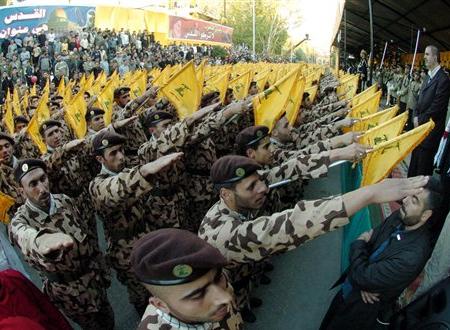
| THINK-ISRAEL |
| HOME | July-August 2010 Featured Stories | Background Information | News On The Web |
This article is about the geopolitical expansion of the Iranian regime as well as its terrorist and strategic reach around the world. Iran has developed weapons, created terror networks and established a system of alliances, challenging and threatening the region and the international community.
The United States became painfully aware of the threat posed by global jihadism after the terror attacks of September 11, 2001. Until that day, Iranian-backed terrorist networks, such as Hezbollah, were responsible for killing more American citizens than al-Qaeda. In the years since, the balance has been gradually tilting back towards Iran. In the words of former U.S. Deputy Secretary of State Richard Armitage, al-Qaeda may be the 'B' team of international terrorism, but Hezbollah is the 'A' team. Indeed, Iran's Khomeinists began their war on the U.S. and other democracies years before Osama bin Laden began his jihad.
The takeover of Iran's government in 1979 by radical Islamist forces faithful to Ayatollah Ruhollah Khomeini was the breakthrough after which the so-called Islamic Revolution spread throughout the Middle East and beyond. The Khomeinist revolution is ideologically rooted in a radical Islamist doctrine that stands in opposition to the more traditional "Quietist" school of thought among Shia clerics. In a sense, the Khomeinists are the Shia world's equivalent of the Salafists within the Sunni world. The Islamist Shias are also jihadists, in the sense that they call for the establishment of a future Imamate, a Shia form of Islamic Caliphate, by any means necessarily, including what they coin as "Jihad," which practically means war.
Because it cannot project much conventional military power, Iran threatens the United States, Israel and other democracies by unconventional means. Through the use of its terrorist surrogates — such as Hezbollah — Tehran's reach extends around the world.
The formation of the Iranian-Syrian alliance in 1980 allowed Tehran to penetrate Lebanon's Shi'ite communities and build a militia that enabled it to extend its influence to the Mediterranean. Through Hezbollah, Iran controls the resources of a large religious community in Lebanon and has established itself as a dominant force inside the country. Iran is therefore able to develop networks overseas more easily and engage Israel in direct confrontation from across the border. Furthermore, the alliance has granted greater access to U.S., European, and other interests on behalf of the Khomeinist regime.

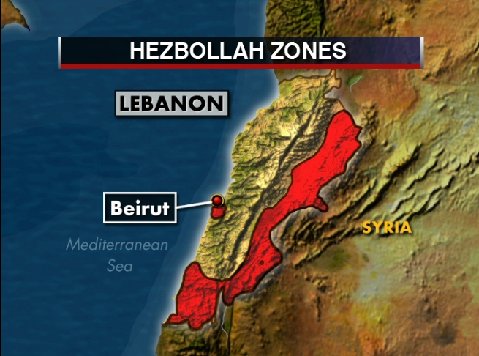
Hezbollah was an Iranian project designed to export its revolution globally and it fast became the single most dangerous terrorist network. Since the 1979 revolution, the ayatollahs have invited radical Shia clerics from Lebanon to Iran for theological training. They also recruited militants, including Imad Mughniyeh, who became the central figure in the terror nexus for decades. The Iranian Revolutionary Guard Corps (Pasdaran) established its first bases in the northern Bekaa valley in 1980. From there, it connected with "Islamic Amal," an offshoot of the Amal Movement, and with radical religious scholars who studied at the holy cities of Qom in Iran and Najaf in Iraq.
Hezbollah was born in a gradual process under the auspices of the Pasdaran and launched from the Bekaa towards South Lebanon and Beirut's southern suburbs. It took part in limited clashes against Lebanon's Christian enclave in early 1982, and as the Israeli invasion destroyed the Palestinian Liberation Organization (PLO) infrastructure in the South in June, Iran sent Hezbollah into the fray. Its first strikes were directed at the U.S. embassy and Marines, and French troops. Throughout the 1980s, Hezbollah took U.S. and European hostages and engaged in operations against Israeli forces and their local allies in the South Lebanon Army (SLA).
In 1990, Syria invaded East Beirut, seizing the central government and conferring a mantle of state legitimacy on Hezbollah. Iran consequently gained a third ally in the region, the Syrian-controlled Lebanese Republic. After a decade of attacks, including suicide bombings, the Iranian-funded organization won another victory when Israel withdrew from the security zone in southern Lebanon and the SLA was disbanded.
In May 2000, Hezbollah was poised along the international border with the "Zionist enemy." Through Lebanon's institutions, ports of entry, and security apparatus, Iran has expanded its base inside the country, obtained additional funding, and penetrated many countries around the world, from Africa to Latin America. In 2005, the organization intimidated members of Lebanon's Cedar Revolution, using terrorism to put down a democratic uprising against Khomeinist-Baathist domination.
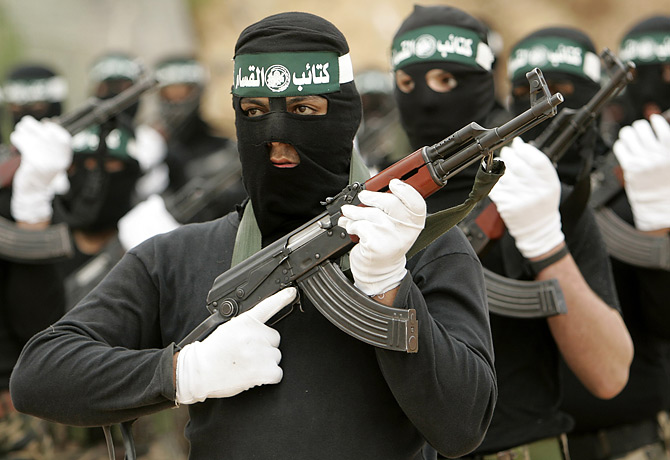
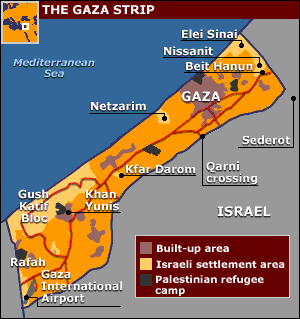
In the early 1990s, Iran finally connected with Hamas through Hezbollah. The hundreds of jihadists exiled by Israel into Lebanon were absorbed by the Khomeinist organization in various training camps. The encounter between Hezbollah (a Shia Islamist organization) and Hamas (an offshoot of the Sunni Muslim Brotherhood) created the first hybrid of Sunni extremists acting in alliance with Shia fundamentalists. Iranian funding further strengthened Hamas.
The new strategic partnership gave Iran influence inside the Palestinian communities, particularly in Gaza. As a jihadist organization, Hamas rejects the peace process between Israel and the Palestinians, as it does not recognize the existence of a Jewish state. Initially, its Muslim Brotherhood training and Wahhabi funding directed its efforts against the PLO negotiations with Israel, but when Hamas entered an alliance with Hezbollah and Iran, it became part of a regional axis commanded from Tehran, and thus became part of the ayatollahs' strategy to expand across the region and topple moderate Arab governments. Hamas's 2007 coup d'etat against the Palestinian Authority signaled that Hamas had become another Iranian tentacle in the region.
The Iranian plan for Iraq is nothing new. Since the first days of the 1979 revolution, Iranian intelligence fomented trouble in the Shia areas of Iraq. Its long-term goal would see the Shia majority in Iraq sympathetic to the regime in Tehran and provide a land bridge to Syria and Lebanon in the west – from Tehran to the Mediterranean Sea. With southern Iraq dominated by Iran, it would change the nature of the confrontation with Israel and threaten the oil-rich states of the Arabian Gulf.
The Shia Hizb al-Dawa of Iraq had struggled to establish an Islamist state in Mesopotamia since the 1960s. During the Iraq-Iran War, Khomeini planned to seize Basra and Iraq's southern provinces and declare an Islamic Republic there. After Saddam Hussein invaded Kuwait and was routed, thousands of Shi'ites fled to Iran, where they were trained by the Pasdaran. The Badr Brigade, Supreme Council for Islamic Revolution in Iraq, and other Iraqi factions were born in exile in Iran.
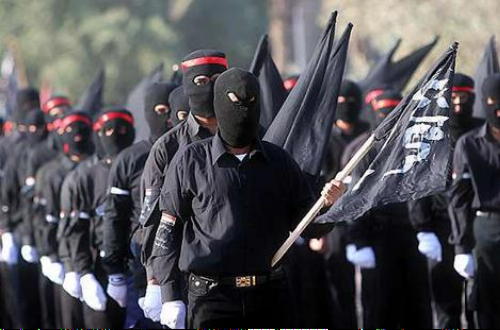
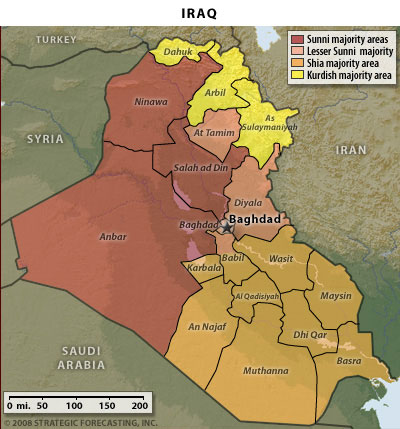
With the collapse of Iraq's ruling Baath party at the hands of the U.S.-led coalition in 2003, Iran began another secret invasion of Iraq, dispatching operatives, special forces and Hezbollah trainers throughout the Shia areas of the country. Iran penetrated most political parties with Islamist (Shia) inclination, and organized a bold pro-Khomeinist force: the Mahdi Army. Iran, Syria, and Hezbollah worked in unison to establish a "pro-axis" force inside Iraq.
In Afghanistan, Iran's strategists were undeterred by the presence of NATO troops after 2001. Despite the collapse of the Taliban regime that year, Tehran infiltrated Afghanistan's Shi'ite Hazara community in the center of the country and provided logistical support to the Taliban insurgency. Evidently the Iranian regime is interested in driving out the U.S.-led effort, weakening the Karzai government in Kabul, and carving out its own influence in the Central Asian country. And Tehran's reach in Afghanistan will only increase as Pakistan becomes increasingly unstable.
Over the past few years, Tehran has widened its subversive activities in the Arabian Peninsula, quarreling with the Gulf Arab states of Bahrain and the United Arab Emirates. Although the UAE claims the island of Abu Musa as part of its sovereign territory, Iranian forces have occupied it, and reject calls to withdraw. Recent statements by Khomeinist clerics assert that Bahrain, too, is an Iranian possession under the name of Mishmahig Island, and it has triggered a severe diplomatic crisis with the small kingdom.
Behind these historical disputes lay greater geopolitical ambitions. Iran has been investing large amounts of oil money in the UAE with the aim of expanding its political and military influence in the Gulf. Iranian intelligence has also been expanding its cells and cadres in the large Shia community of Bahrain.
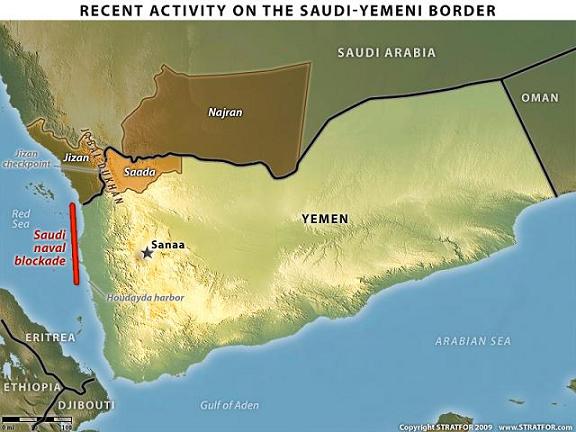
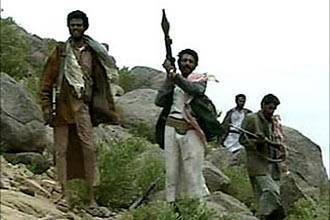
In the majority - Sunni Yemen, the Pasdaran's networks have hooked up with the Houthis, who are waging an armed insurrection in the northern tip of the country. Yemeni President Ali Abdallah Saleh has accused Iran and Hezbollah of training the insurgents, who have battled government forces and attacked Saudi positions across the border. By 2009, the Khomeinists had practically established a military enclave in the southern corner of the Arabian Peninsula, threatening Saudi Arabia and its most sensitive province, the Hejaz, home to Islam's holiest shrines Mecca and Medina.
Although North Africa has been home almost exclusively to Salafi jihadists, it has witnessed increased activity by Tehran's Shi'ite operatives. According to Moroccan authorities, Iran has funded religious institutions whose first mission is to convert Sunnis to Shia, in what is coined as "Tashyeeh." In 2009 and 2010, the Rabat government shut down a number of these entities and arrested people involved in them.
Moreover, Moroccan and Algerian opposition sources believe Iran is attempting to convince Algiers to proceed with cooperation agreements similar to the Iranian-Syrian treaties or the latest Syrian-Turkish accords. If this thrust were to bear fruit, the benefits for Tehran would be incalculable. Not only would the Khomeinists have a solid base south of the Mediterranean, but they would also gain a wide gate into the weak states of Central Africa and beyond.
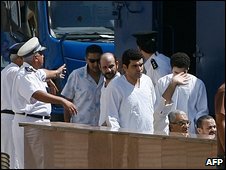
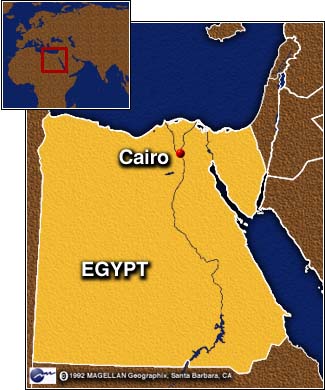
Meanwhile, last year in Egypt, Hosni Mubarak's government accused Hezbollah of creating cells inside the country and planning attacks against Egyptian and Western targets. Egypt, the most populous and powerful Arab country with a Sunni majority, has been targeted significantly by Sunni Salafi terror networks. The new addition of Hezbollah cells acting on the inside dramatically raises the threat Egypt faces from jihadists.
Egyptian courts have sentenced a number of Lebanese Hezbollah members as well as Egyptian citizens working with them. From Beirut, Hezbollah's secretary general sent veiled threats to President Mubarak's government, claiming that Hezbollah and the "Islamic resistance" have the right to operate from any Arab and Islamic land against their enemies, principally Israel. Hassan Nasrallah had previously threatened Cairo when he exhorted the Egyptian military to rebel against its government.
But the Iranian strategy to build terror networks along the Nile Valley by way of Hezbollah has not been limited to Egypt. Sudan, whose regime has been both Islamist and jihadist since 1989, has undergone a rapprochement with Tehran. This convergence of interests between the elites of the two rogue states has only increased since the International Criminal Court indicted Sudanese dictator Omar al Bashir for the genocide in Darfur. In the weeks and months following the indictments, Hezbollah delegations followed by Iranian delegates supported Bashir against the West, and thus against the African uprisings in the south, west and east of the troubled country.
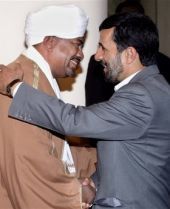
Iran's access to Sudan also brought strategic advantages to the Pasdaran: Hezbollah and Iranian intelligence benefit from the immense land mass by building military bases and training regime militias for potential confrontations to come. By linking up with Sudan, Hezbollah and its Iranian sponsors now have a host south of Egypt, where they can access the Red Sea via Port Sudan and use paths to Eritrea and Chad.
Towards the end of 2008 and 2009, intense contacts between Iranian president Mahmoud Ahmadinejad's representatives and Eritrean officials culminated in the signing of an agreement granting Iran's navy facilities along the coasts of the Eritrea. This strategically significant development provided the Khomeinists with hundreds of miles of access in the Red Sea. While U.S. and allied naval forces deter Iran in the Persian Gulf, Iranian assets — though not as sophisticated as the Western forces in the region — can now operate in the Red Sea. Indeed, where the Iranian regime goes, Hezbollah follows. Israel is thus surrounded by Iranian proxies and the Horn of Africa is under the increasing risk posed by the axis of resistance.
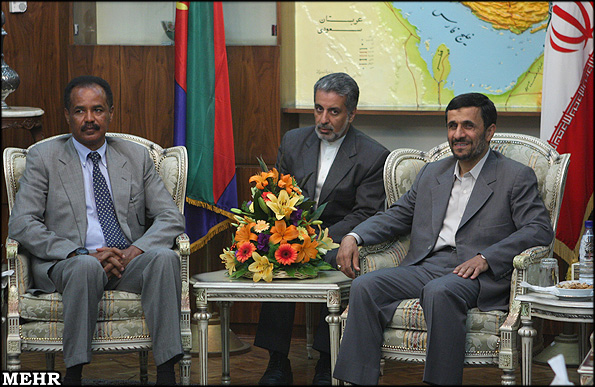
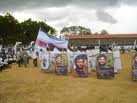
Iran has also worked to penetrate West Africa since the 1980s. Taking advantage of the substantial size of the Lebanese communities in Senegal, Liberia, Sierra Leone, the Ivory Coast, Benin, and Nigeria, Hezbollah has developed financial and intelligence networks that span the entire region. This increase of Iranian-backed activities in West Africa could have negative effects on security coordination between these countries and the West, including the U.S. and Europe.
Since the so-called "Islamic revolution," Iran has undertaken sinister intelligence activities throughout Europe, intimidating and occasionally assassinating opposition figures and dissidents. But Tehran's most dangerous presence in Europe comes in the form of active Hezbollah cells. Since 9/11, a number of European governments have detected Hezbollah activities on their soil. Indeed, Germany has arrested and tried members of the organization who were planning illegal activities.
Iran has extended its strategic reach into European countries, penetrating them with intelligence and terrorist networks, and weakening their resolve to join forces with the U.S. in sanctions or other punitive measures against Tehran.
Iran's longest arm stretches into Latin America. As of the early 1990s, Hezbollah had established a presence in the tri-border area between Brazil, Argentina and Paraguay. This lawless zone enables the Khomeinist network to develop illegal financial activities and train and plan for terrorist attacks in the region. The 1992 bombing of the Israeli embassy in Buenos Aires and the 1994 bombing of a Jewish center there are prime examples of Tehran's terrorist activities and global reach.
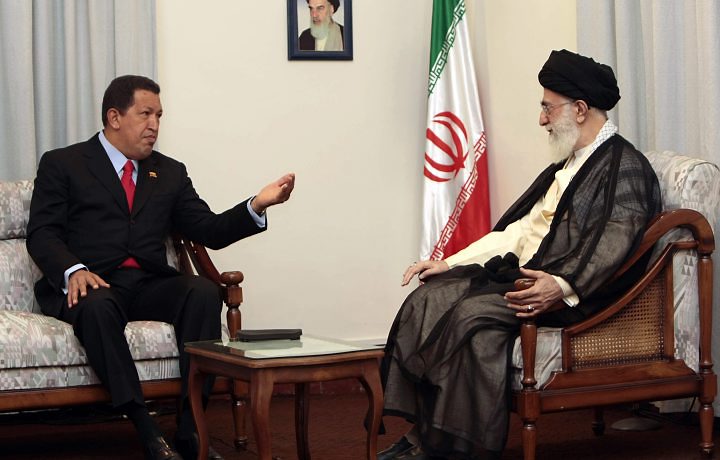
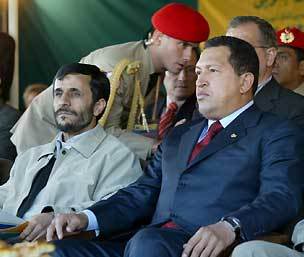
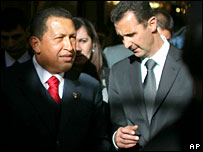
With the rise of the Hugo Chavez regime, Iran's Latin American presence expanded even further. The Venezuelan strongman has signed several agreements with Ahmadinejad's regime, including an April 2009 defense treaty that provides for military and intelligence cooperation. Venezuela has granted Hezbollah operatives permission to organize their presence under the protection of Iran's Pasdaran and local intelligence, and according to U.S. Department of Defense reports, the Venezuelans are providing Iranian units with Spanish language instruction with the aim of inserting them in a Latin American context. One of the most dangerous aspects of Iran's presence in Venezuela is the increasing ability to install Iranian missiles aimed at the United States and other countries in the region.
As of now, Iran's reach within the United States is principally — but not entirely — in the hands of Hezbollah's networks, which have been trying to recruit new agents since they established their own foundations in Lebanon in the 1980s. Working naturally through Lebanese communities, beginning with its bases in the home country, Hezbollah established groups and cells inside the U.S. in states such as Michigan, New York and North Carolina. The main activities detected by U.S. law enforcement organizations have centered on smuggling, fundraising, and providing material support to the mother organization in Lebanon. But Hezbollah has gained valuable experience in penetrating Lebanon, Egypt, Iraq, Yemen and the countries of northern Africa, which enables Iran to do considerable damage to the U.S. in case of open conflict. American authorities have also been monitoring Iran's financial presence in the U.S., with recent discoveries showing Iranian front companies even holding assets in Manhattan.
Over the past few years, two additional Middle Eastern governments — supposedly close U.S. allies — have been aiding Iran in its attempts to emerge from international isolation. Since 2002, Turkey, led by the Islamic Justice and Development Party (AKP), has slowly become more supportive of Iran's policies, including Tehran's nuclear program. Turkish Prime Minister Recep Tayyip Erdogan recently endorsed Ahmadinejad's controversial reelection despite the massive democratic opposition inside Iran. Ankara's Islamists also rejected UN sanctions over Iran's nuclear program.
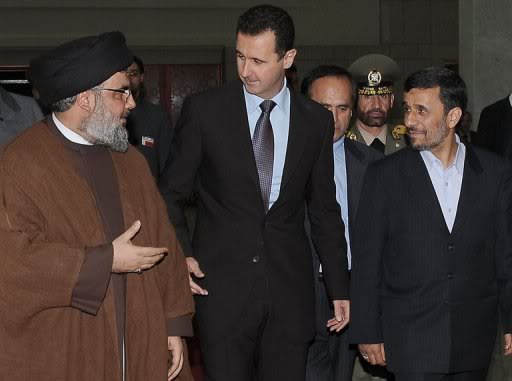
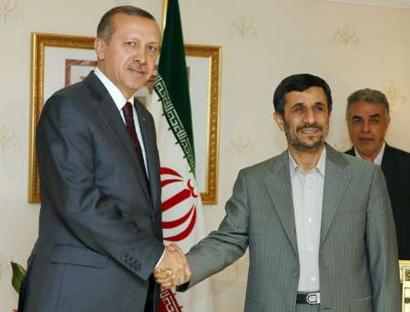
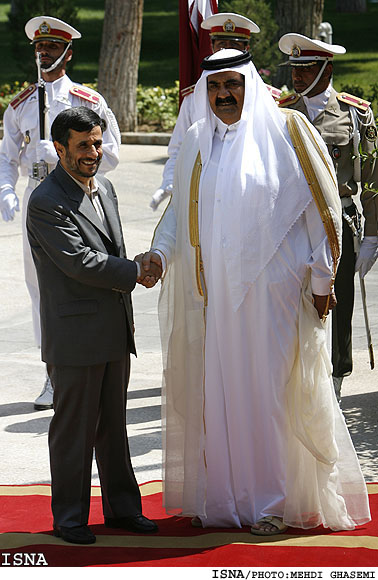
According to several Arab governments, Qatar, which has been funding the Al-Jazeera network since the late 1990s, has also made life easier for the Iranian regime in the region. Qatar's emir made diplomatic maneuvers to prevent the UN from implementing Security Council Resolution 1559, which provides for the disarming of Hezbollah in Lebanon. Instead, Qatar held a counter-conference in Doha in 2008 to help bring Hezbollah into the fold of the Lebanese government, at the expense of the democratic Cedar Revolution.
The threat from Iran goes far beyond its pursuit of nuclear weapons. Its use of terrorist proxies and its creation of global terror networks has been one the longest-standing bones of contention with the West. Despite the current focus on the Taliban and al-Qaeda, no group has had more practice in global terrorism than Hezbollah, and no state has proved a better and more consistent patron than Iran.
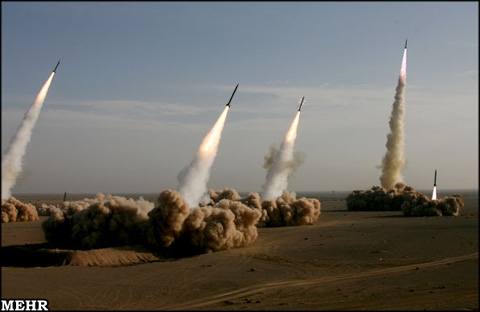
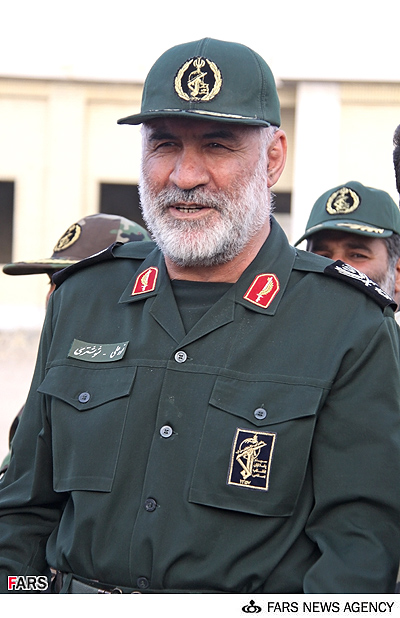
From a U.S. counterterrorism perspective, the threats posed by Iran, Hezbollah, and its global terrorist network are considerable. But the addition of nuclear weapons into this global network of Khomeinists may well prove as dangerous if not more so than nuclear weapons in the hands of al-Qaeda.
Dr. Walid Phares is director of the Future of Terrorism Project at the Foundation for Defense of Democracies. He teaches global strategies at the National Defense University and is author of The Confrontation: Winning the War Against Future Jihad.
This article
was published in Vol IV, # 2 of the summer 2010 edition of InFocus Quarterly
(http://www.jewishpolicycenter.org/1747/iran-global-terrorist-reach).
| HOME | July-August 2010 Featured Stories | Background Information | News On The Web |